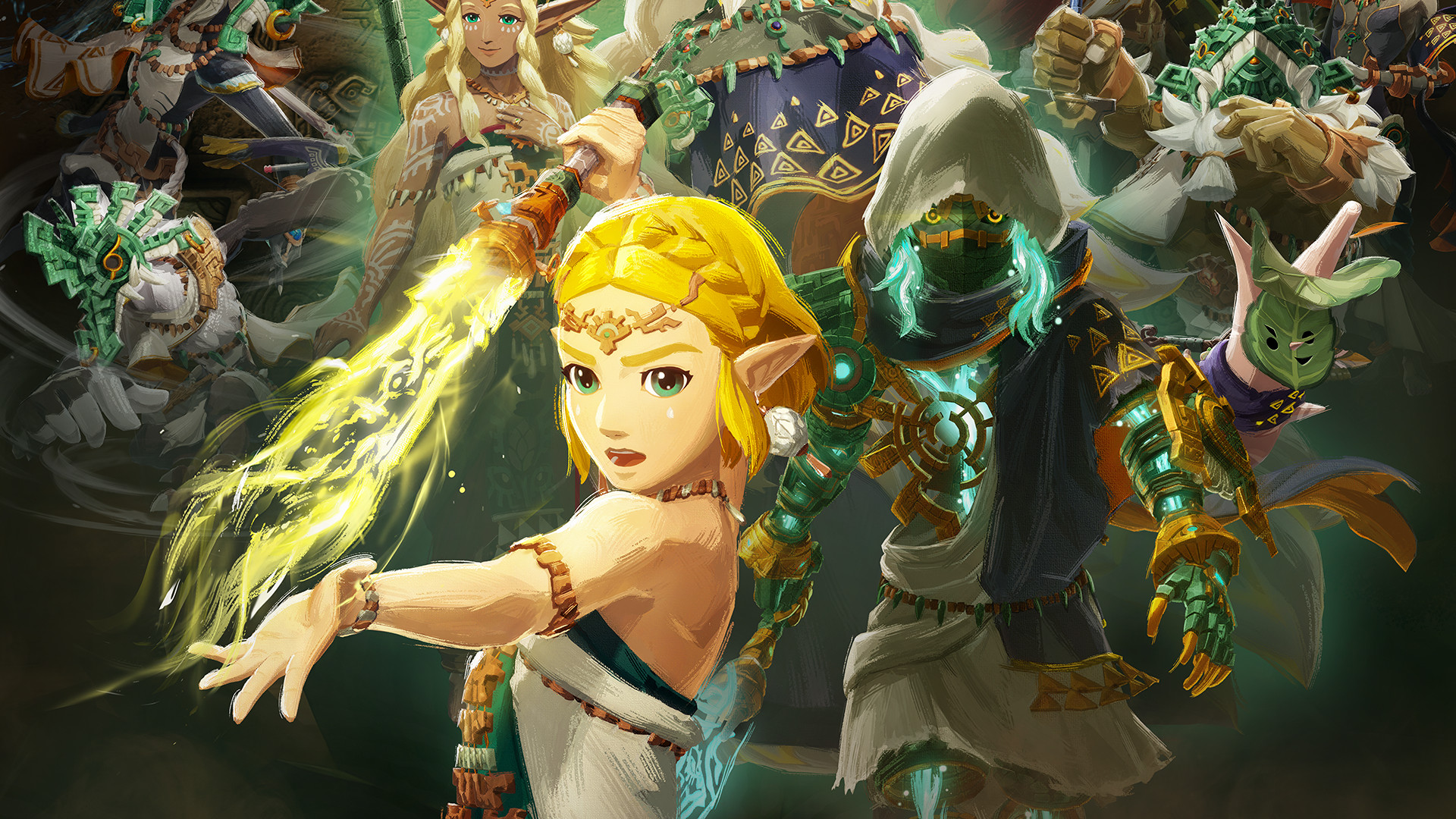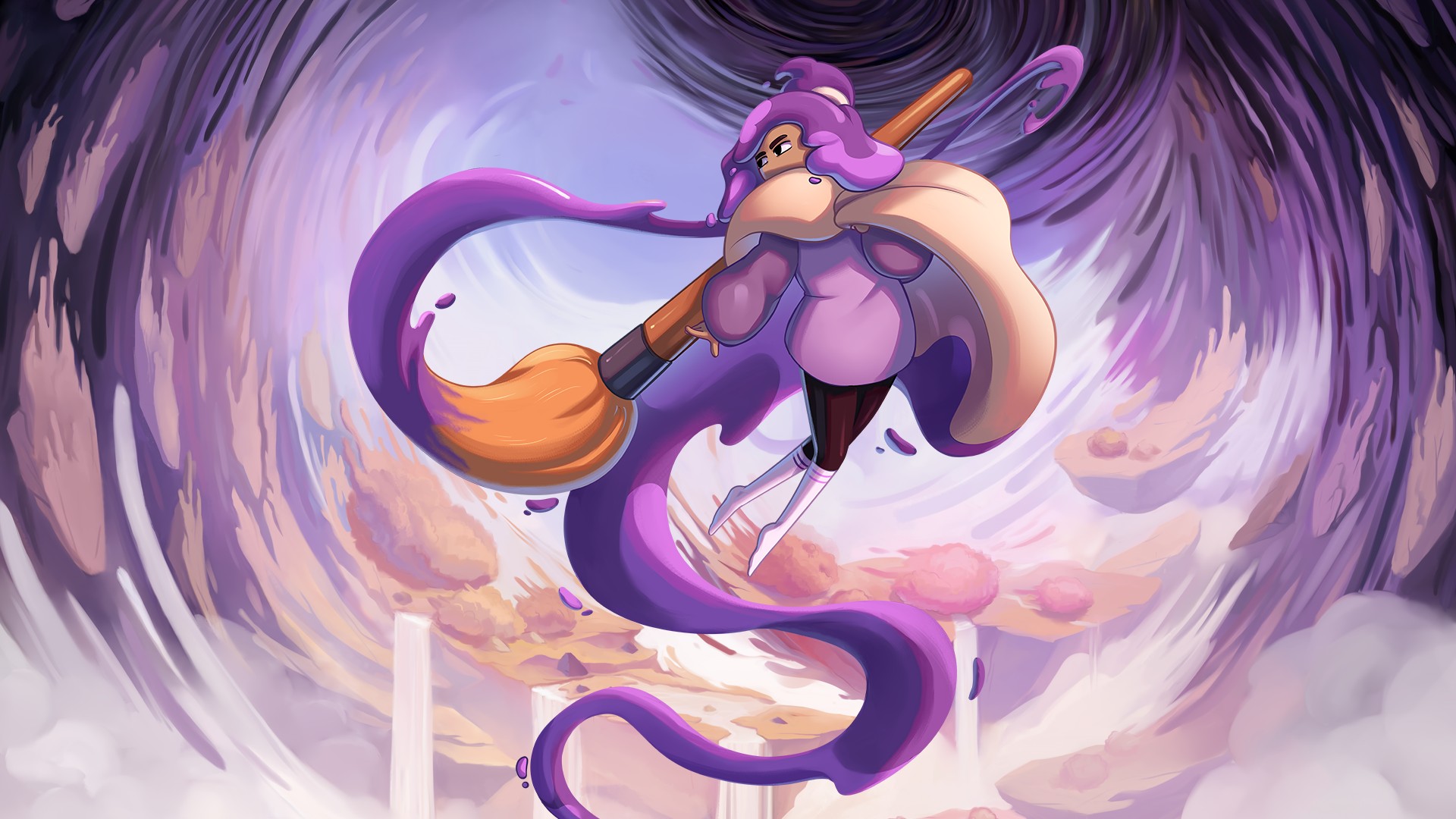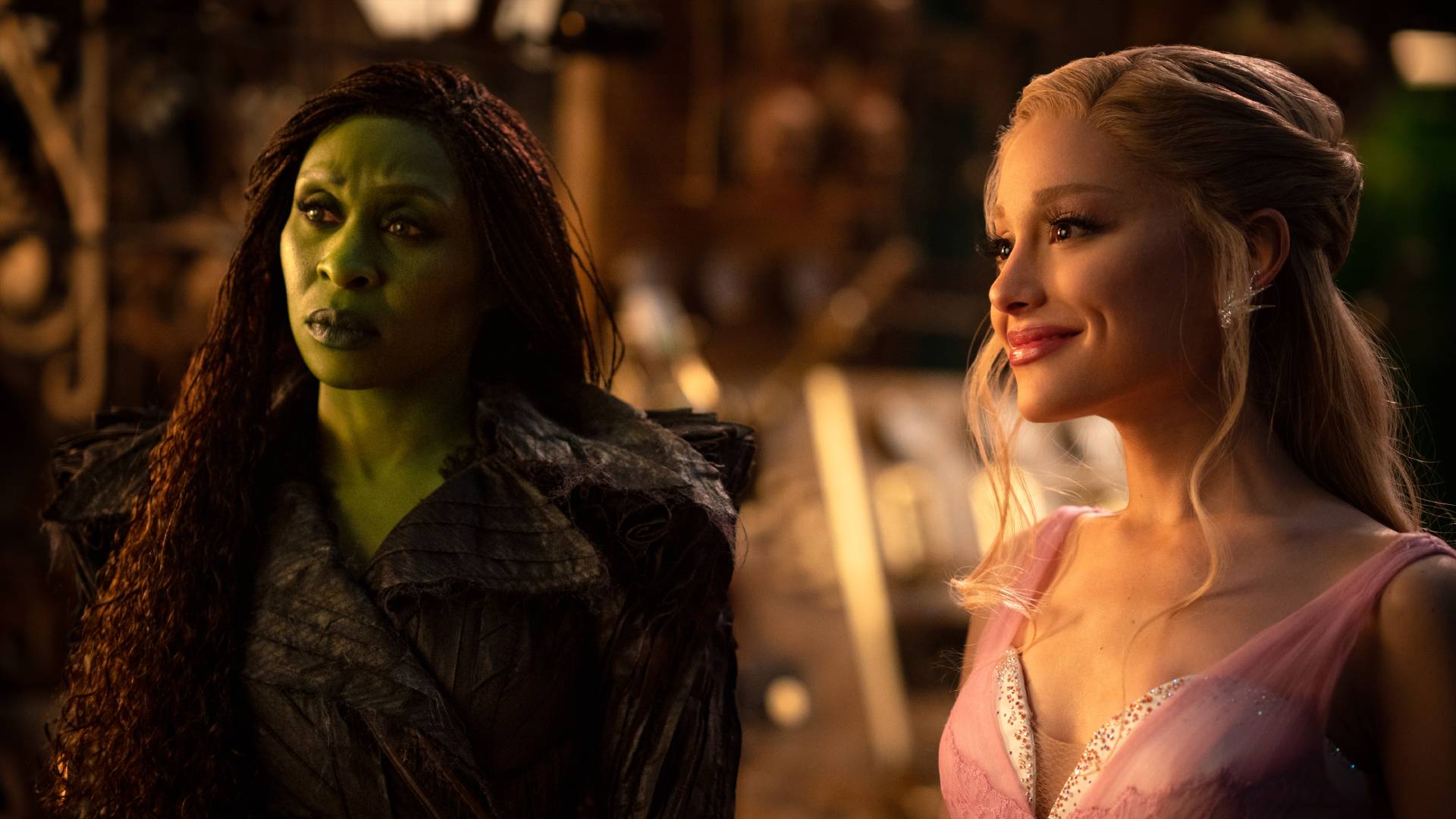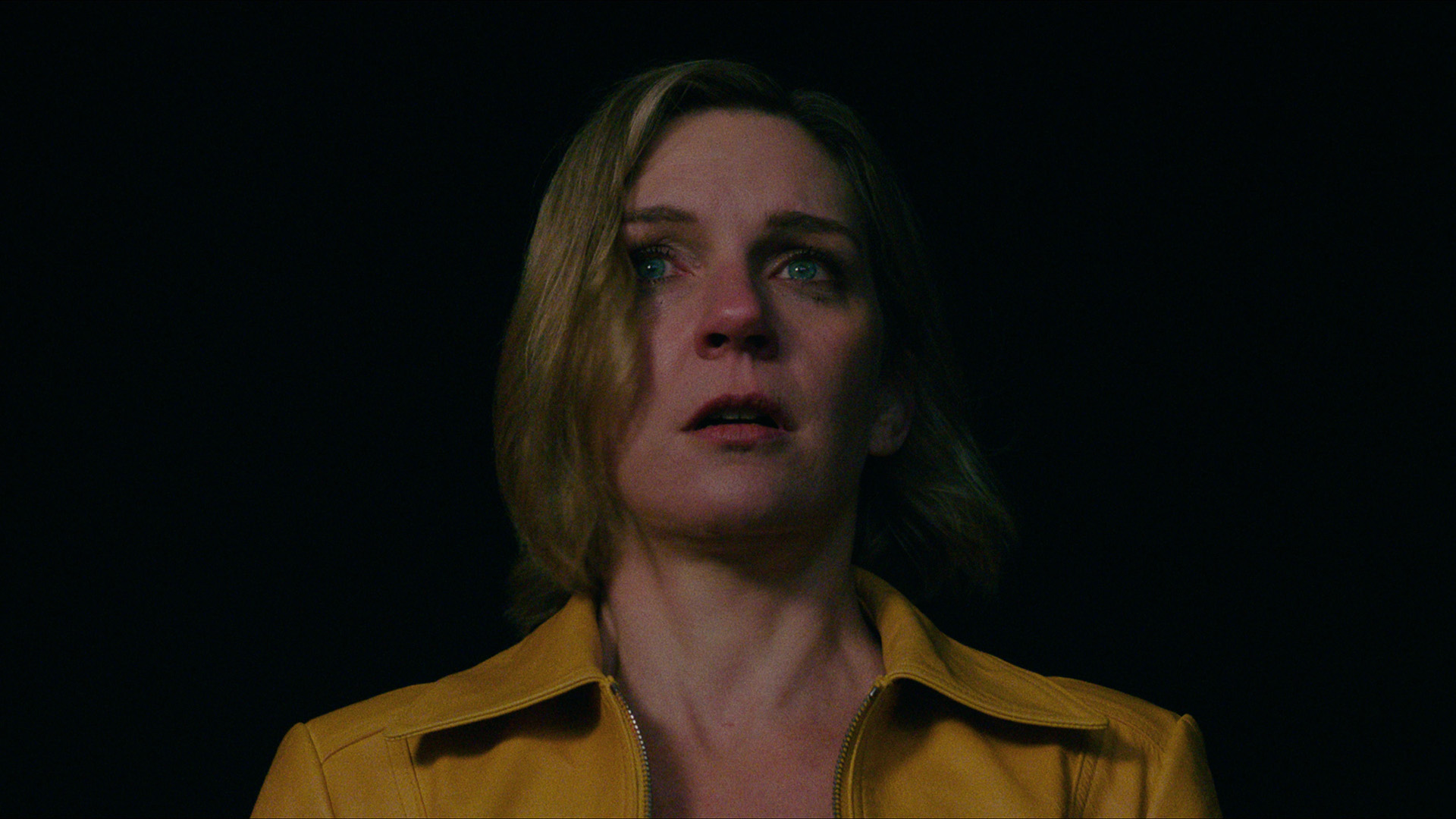GamesRadar+ Verdict
Hyrule Warriors: Age of Imprisonment manages to find exciting stories to tell as a Tears of the Kingdom prequel, with Princess Zelda taking the lead to spend plenty of time with some all-timer characters old and new. But, while action and performance is an upgrade from the last Hyrule Warriors, strangled battlefield and mission designs become dull, holding this back from true magic.
Pros
- +
Zelda is a great lead
- +
Tech performance is great
- +
Story additions work well
Cons
- -
Boring battlefield design
- -
Missions overly linear
- -
Shooter sections are an odd addition
Why you can trust GamesRadar+
Hyrule Warriors: Age of Imprisonment shows it's Zelda's era and we're just living it. Not only did the titular princess take over from the green-garbed hero Link in the top-down The Legend of Zelda: Echoes of Wisdom last year, she's back to do it again in this lavish prequel to The Legend of Zelda: Tears of the Kingdom. Where Echoes highlighted her book smarts with a copy wand to solve puzzles, here in Age of Imprisonment she's handed a light-powered beam saber and told to get slicing.
Following some accidental time travel shenanigans at the beginning of Tears of the Kingdom, Princess Zelda spends most of that game benched back in the past – Link uncovering the mystery around what happened to her by tracking down collectible flashbacks. In Hyrule Warriors: Age of Imprisonment, we get to live that history as Zelda links up with the founding rulers of Hyrule as they forge alliances with neighboring clans and take on the might of the evil Ganondorf – whose malevolent power is responsible for the later threats throughout both those main Switch games. It's a similar set-up to predecessor Hyrule Warriors: Age of Calamity, which told an alternate history of a different conflict closer in the timeline to The Legend of Zelda: Breath of the Wild (Age of Imprisonment, however, goes to efforts to stay canon).
Hy-way to Zel'
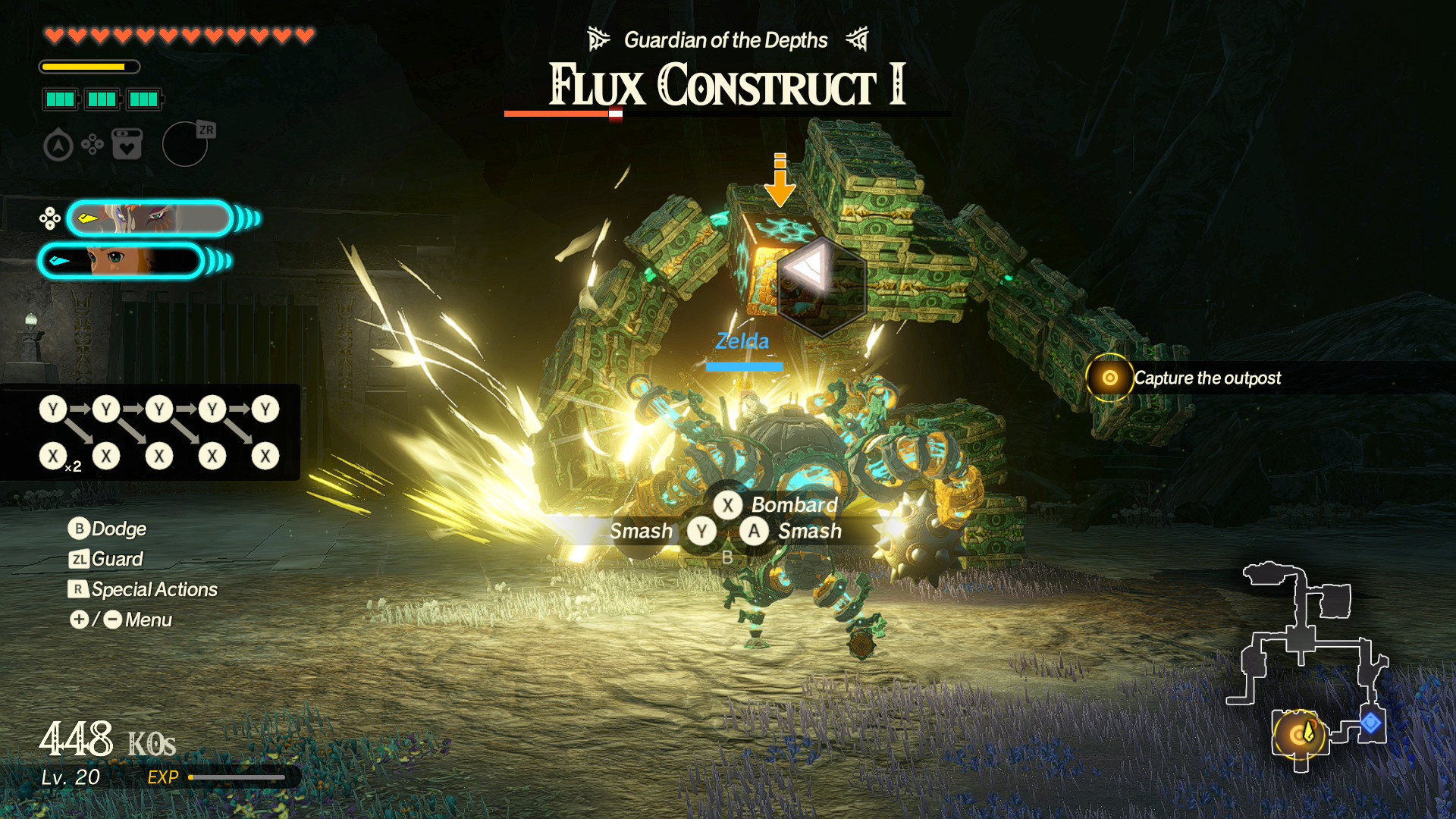
Release date: November 6, 2025
Platform(s): Nintendo Switch 2
Developer: AAA Games Studio
Publisher: Nintendo
Hyrule Warriors: Age of Imprisonment sometimes struggles with this set-up. The premise will mostly appeal to those who already played Tears of the Kingdom, but having to stick to showing those same events playing out over a greater span of time makes story beats predictable. But it's also the game's greatest strength – characters like King Rauru and his inventor sister Mineru were incredible yet all-too-brief parts of Tears of the Kingdom. Getting to see Zelda hang out with them and form bonds over many hours is fantastic – like meeting old friends.
Age of Imprisonment expands on the lore we know from Tears of the Kingdom – the awakening of dangerous, ancient humanoid constructs, and new foes to scrap with. I'm avoiding spoilers, but these new story elements have the vibe of when a long-running anime series would have a movie release in the '00s, a vaguely filler feeling where new adventures are had but, by design, can't have consequences that have too much impact on the grander narrative. I actually really like that for Age of Imprisonment, though – Nintendo has crafted a magnificent world across Breath of the Wild and Tears of the Kingdom, and getting the space to explore that further is appealing.
But, not every aspect of this particular age of Hylian history stacks up. The historical sage heroes of Age of Imprisonment feel a bit sauceless compared to Age of Calamity's champions. Tears of the Kingdom just didn't build out its glimpses into the past to the same degree as Breath of the Wild did, and as a result it's hard to feel the same affection to every historical figure we meet in this fantasy world. Age of Imprisonment doesn't change that. Bird-like rito warrior Raphica will never be the sassy Revali, and having each sage play similarly to their champion counterparts doesn't do much to avoid comparison.
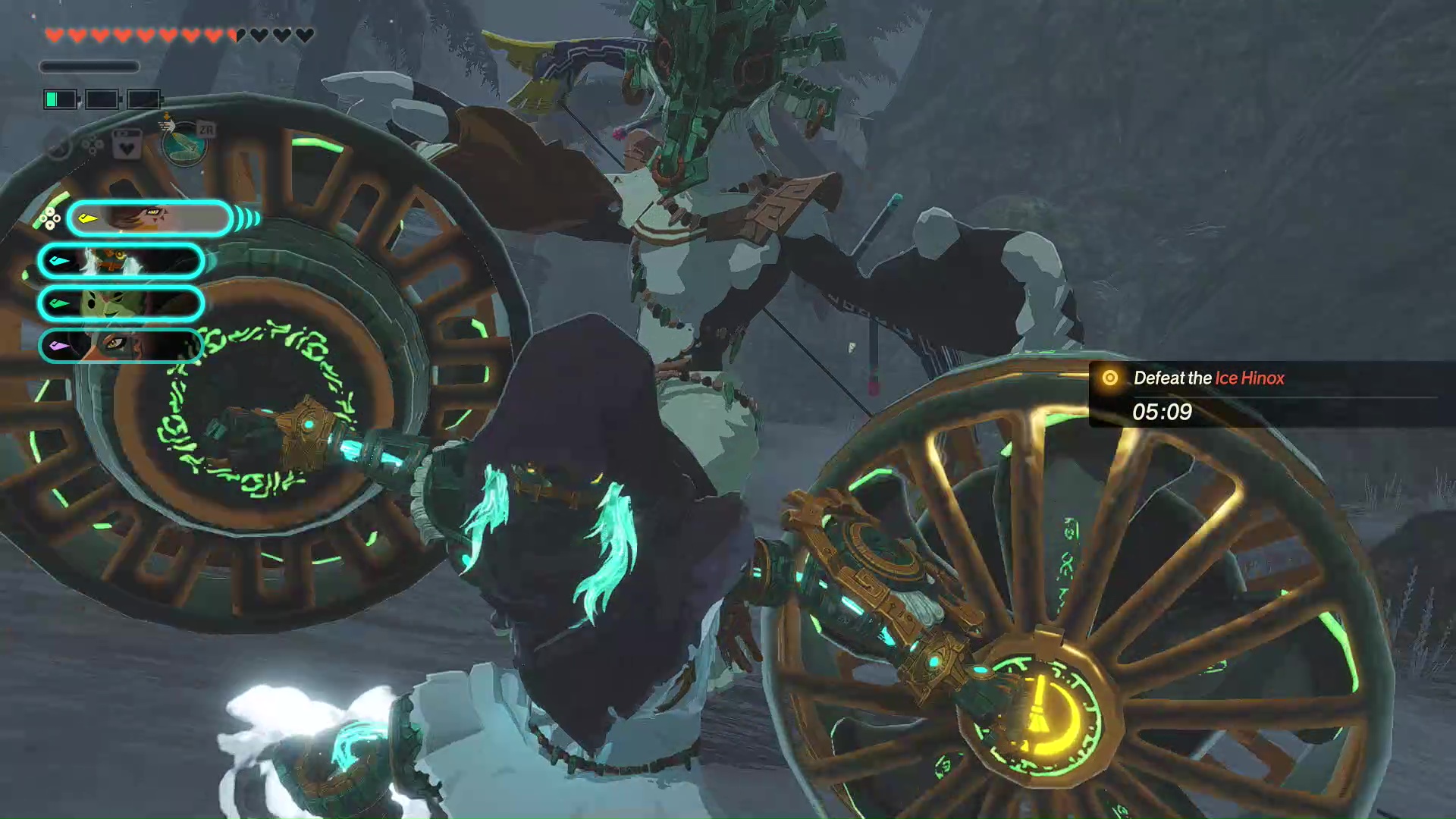
Newcomers make up for that, though. Calamo, a traveling korok with a jaunty hat, has instantly become one of my favorite Zelda characters ever. Part of the story sees Zelda and the sages doing battle in some areas, while Calamo meets up with less important characters across each fantasy race while undertaking his own journey.
These could risk feeling like roster fillers, but even though they're less detailed I really like these additional characters – Lago, for instance, is an older battle-hardened zora (a fish-like species), who stands apart from his much younger sage queen. There's a neat sense of how these regular warriors need to give it their all to go toe to toe with hordes of demonic creatures.
Weekly digests, tales from the communities you love, and more
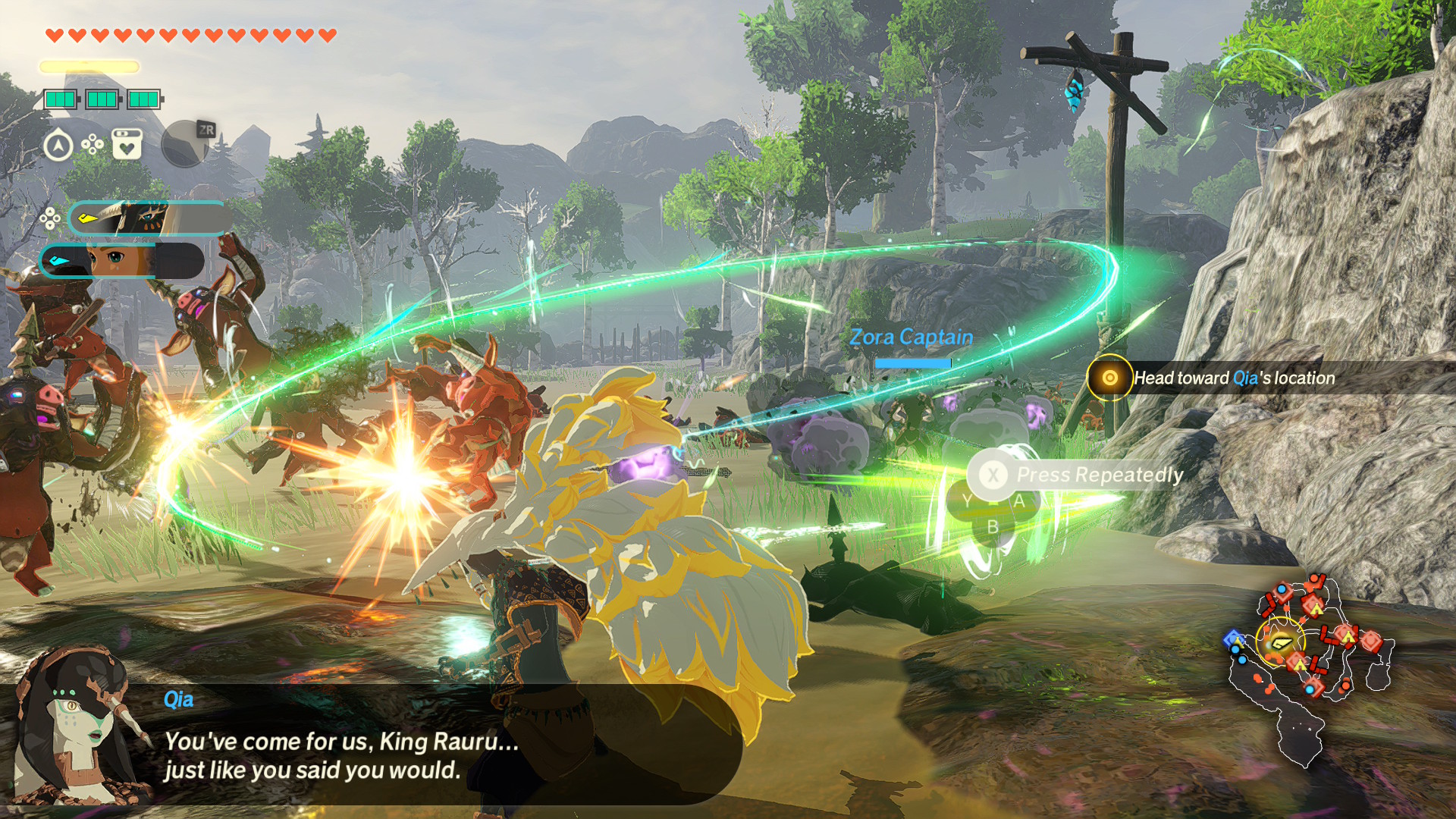
There's a thrill to seeing those numbers climb.
While story matters a lot in a Zelda game, for a Warriors game it's all about the combat – mashing out flashy combos that sends hordes of enemies tumbling at once, flashing up increasingly large numbers on screen. 300 KO! 500 KO! 1,000 KO! There's a thrill to seeing those numbers climb, and new mechanics like sync strikes really help you feel empowered to throw Ganondorf's forces around like ragdolls.
The power of the Switch 2 is well-utilized to deliver on this spectacle, smoothly translating the art style into battlefields absolutely laden with enemies to give a clobbering from bokoblins to gibdo and even keese. Just about every foe from the main Zelda games is present to thwack. The brutal framerate slowdowns that plagued Age of Calamity, like Zelda, have been banished to the past. Swapping between a party of heroes using the d-pad, you can even jump between points on the battlefield almost instantly – with smarter AI meaning your other party members usually go right where you'd want them to without needing to be manually commanded (though you can still do that if you wish).
Characters play similarly enough to make swapping between them on the fly easy enough. All combos are a succession of light attacks, with you picking when to use a heavy attack to initiate a bigger finisher move. Some combo branches, depending on hero or weapon type, can have extra button presses or holds. You can dodge, sprint, block – all the usual stuff. The action feels snappy and satisfying, and, yes, you can even join up with a friend to sow destruction together in co-op.
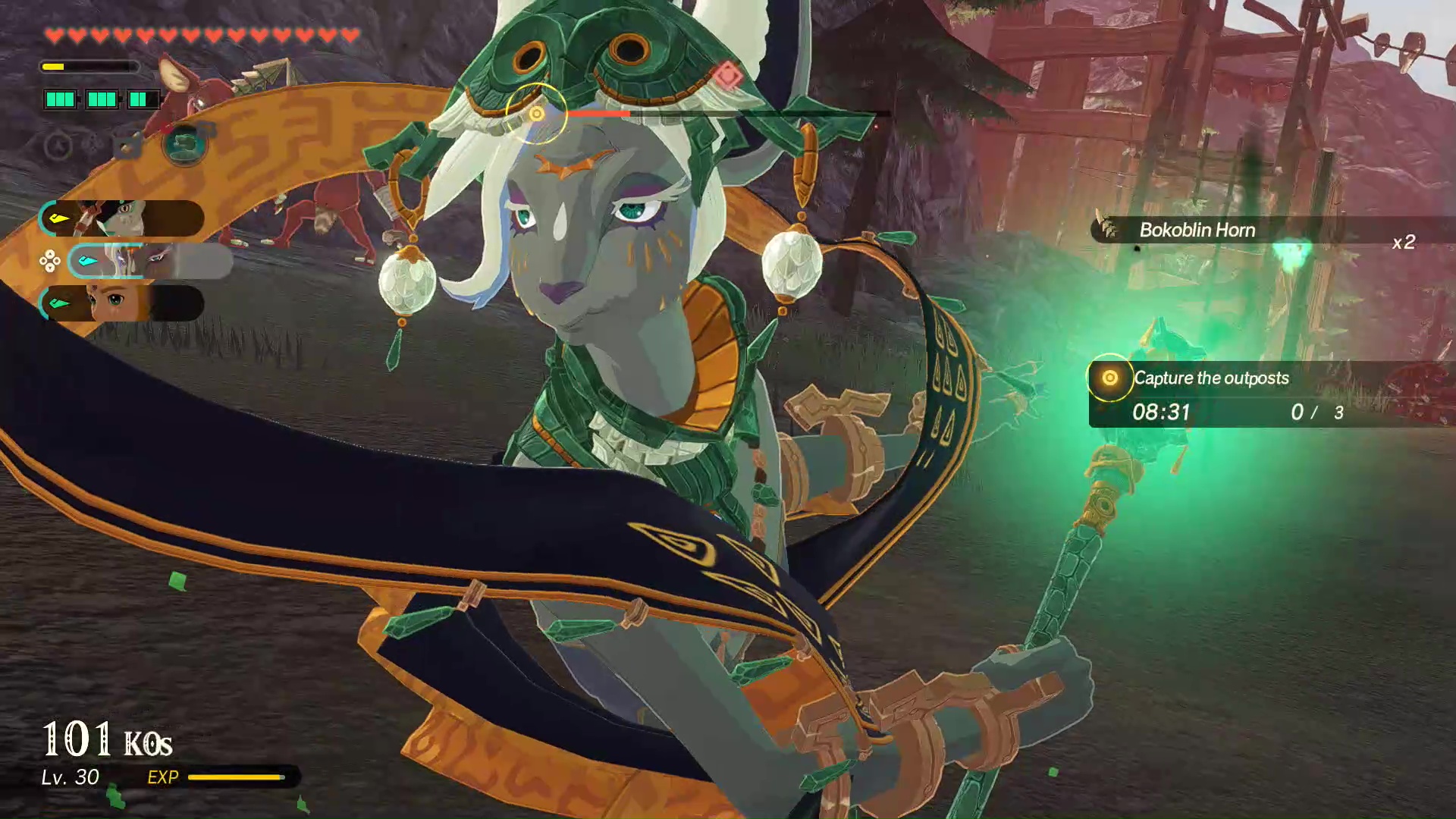
Special attacks and zonai gadgets replace Age of Calamity's power wheel, with the gadgets in particular being a great way for Age of Imprisonment to tip its green hood to Tears of the Kingdom's building mechanic.
There's no actual assembling – though Mineru's combos are all based around her using auto-build devices which is great fun in action – but you can pull out flamethrowers, fans, bombs and the like from your pockets, expending a rechargeable battery as you do. With elemental weaknesses, these add a nice dynamic to skirmishes – hosing down sludge-covered enemies, or blowing off stone armor with explosives.
Fog of war
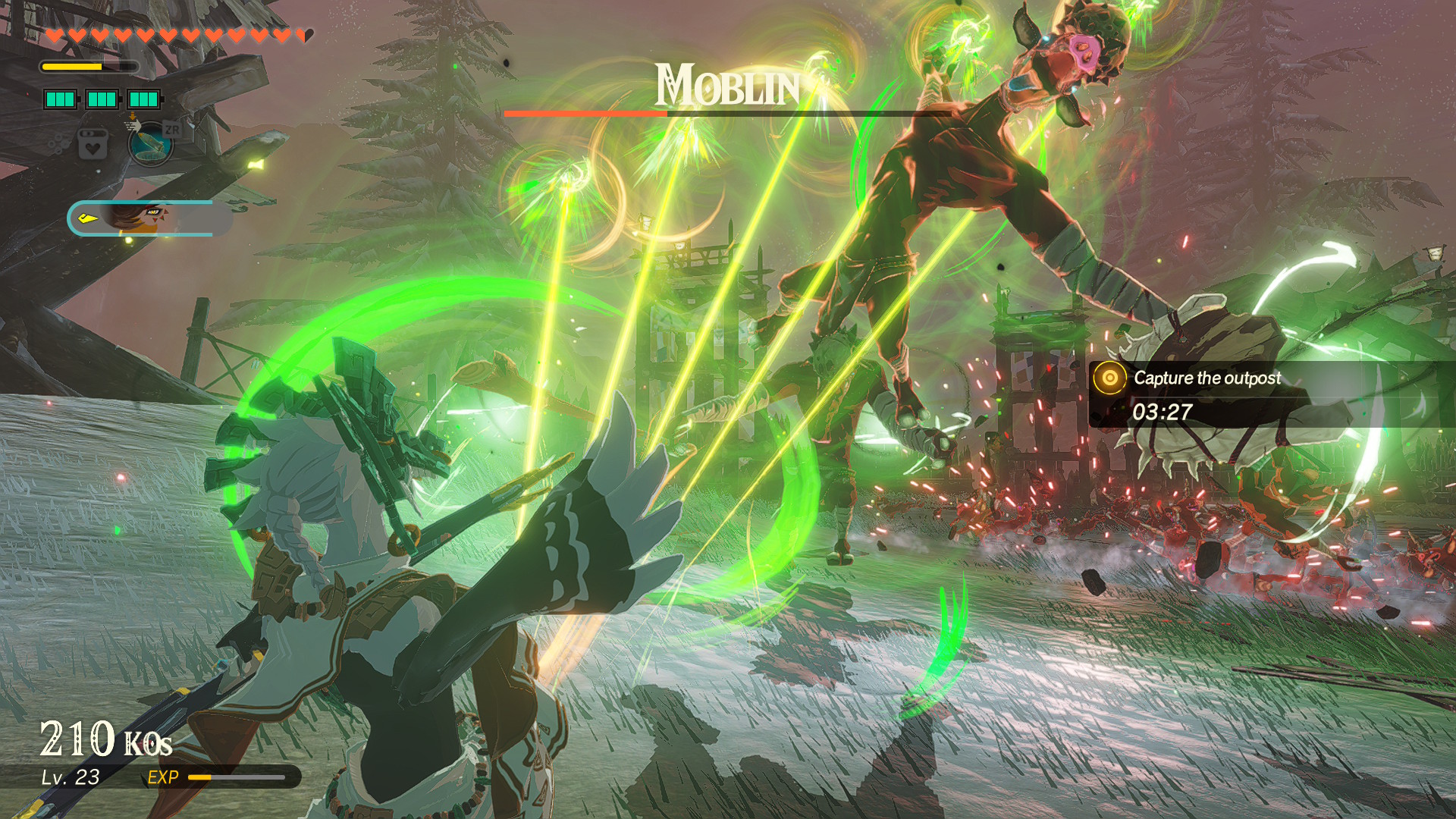
Newcomers like Calamo and company offer enough new to spark interest.
The big disappointment, however, is in the battles themselves rather than the combat itself. Across main missions and oodles of sidequests, they all feel extremely straightforward and linear. Many missions only take place in small slithers of battlefields, and even the ones in bigger areas shuffle you quite cleanly from point to point. There's very little sense of scope to any of the environments, instead feeling just like corridors and rooms. This is present just about everywhere you fight in Hyrule, but is most felt in sections set in the Sky or Depths – both new zones from Tears of the Kingdom, which feel very underutilized as spaces to play in.
Age of Calamity had a range of diverse and interestingly shaped maps, but Age of Imprisonment's feel bland in comparison – even when some maps are essentially the same as in the other game, the undemanding structure makes them worse in this outing. One specific wooded area is still a banger, though. Revisiting Age of Calamity alongside this new one, I had way more fun fighting back through even early encounters there, with sprawling battlefields and pockets of fighting. I'm not a fan of how oversimplified Age of Imprisonment's maps feel to move through at all, and I'm not sure why the approach has shifted. It does feel like even main missions can be quite a bit shorter than the last game, and lack depth as a result.
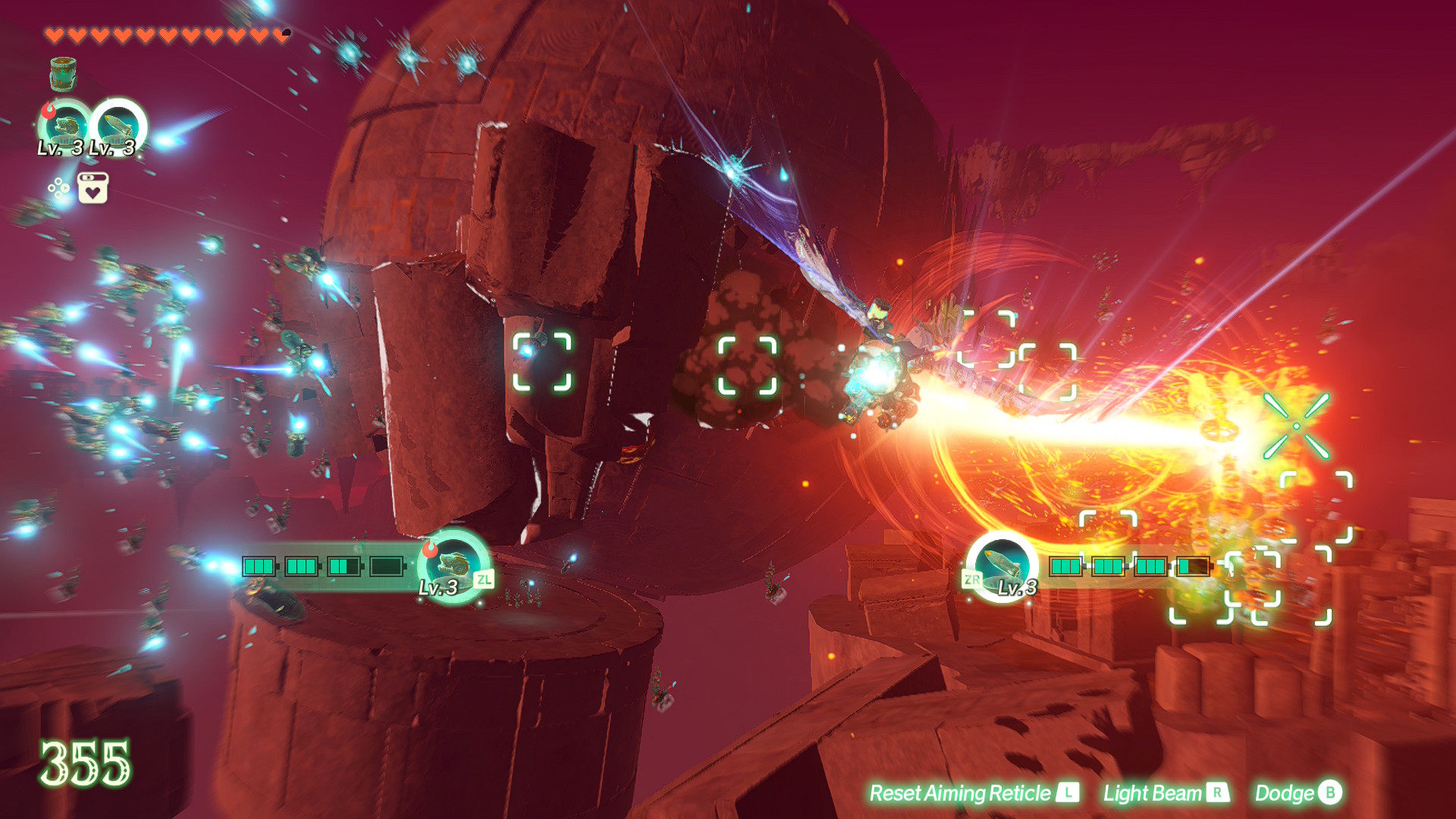
Likewise, the replacement for Age of Calamity's Divine Beast sections doesn't really hold up. In Age of Imprisonment, these are rudimentary arcade-style shooter sections that involve scooping up zonai gadgets to powerup different shot types. It's not like the Divine Beast moments were meticulous bits of design – where you'd get in a giant war machine to level armies – but they did a better job of selling a sense of scale, acting as a climatic reward after battling it out on the ground. These shooter sections are fine but just feel like a mini-game, with little connection to Age of Imprisonment's main action.
It's a shame, as there's an awful lot to like about Hyrule Warriors: Age of Imprisonment, especially for a series fan like me. Zelda is fantastic as a series lead, effortlessly pulling together narrative threads and elevating even some fairly bland characters with her presence – while newcomers like Calamo and company offer enough new to spark interest. But, while action and performance are a step-up, the mission design being so lacking is a huge issue for a Warriors game like this.
While combat is sharply improved, not giving compelling reasons to actually do it feels like a miss, especially when it's been such a strength of Warriors games before this. When I have more fun revisiting the less fully featured Age of Calamity, something has gone amiss. They did call it Age of Imprisonment, I suppose – but I wish they'd let me off the leash a little. Zelda's beam sword hungers for more.
Hyrule Warriors: Age of Imprisonment was reviewed on Nintendo Switch 2, with a code provided by the publisher.
Looking for another adventure? Check out our best Zelda games ranking for more!

Games Editor Oscar Taylor-Kent brings his years of Official PlayStation Magazine and PLAY knowledge to the fore. A noted PS Vita apologist, he's also written for Edge, PC Gamer, SFX, Official Xbox Magazine, Kotaku, Waypoint, and more. When not dishing out deadly combos in Ninja Gaiden 4, he's a fan of platformers, RPGs, mysteries, and narrative games. A lover of retro games as well, he's always up for a quick evening speed through Sonic 3 & Knuckles or yet another Jakathon through Naughty Dog's PS2 masterpieces.
You must confirm your public display name before commenting
Please logout and then login again, you will then be prompted to enter your display name.
